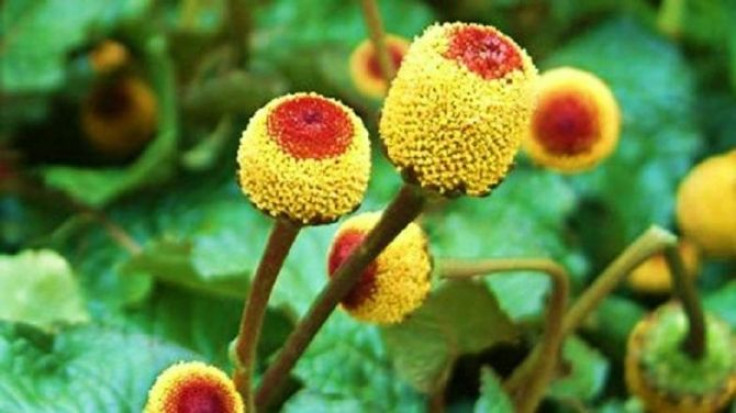Ancient Incan Plant May Replace Dental Needles as Toothache Remedy

A new anesthetic gel made from a rare red and yellow Amazonian plant found in the Peruvian rainforest could revolutionize dental treatment by replacing traditional numbing dental injections.
The ancient Incan toothache cure was discovered by Cambridge University anthropologist Dr. Françoise Barbira Freedman when she visited and lived among the Keshwa Lamas, an indigenous tribe in Amazonian Peru for the past three decades, according to a university news release on Wednesday.
The medical gel remedy, made from the Acmella Oleracea plant, has successfully completed the first two phases of clinical trials for medical use.
Researchers used extracts from the plant and developed a gel that blocks the pain receptors found in nerve endings or sodium channel pathways, and they suggest that the gel could be used to relieve pain from dental procedures like root scaling and polishing and even for pain from irritable bowel syndrome.
The gel was reported to have longer lasting effects, and patients were more likely to attend follow-up appointments.
Peruvian dentists using the plant extract said that the extract also helped treat mouth ulcers and relive pain caused by dentures, braces, gum disease and having teeth removed.
Researchers said that have been no observed side-effects during the last five years of Phase I and II trials. They are confident that the gel would pass the final Phase III trial, and be made available on the market by 2014 or 2015.
“We think the remedy is better than current treatments because NSAID drugs are systemic and have long-term effects; the plant product is not systemic and does not have any known side-effects,” Freedman said.
Freedman said she first came across the plant in 1975, while living among the secretive Peruvian tribe known for practicing shamanism. She had been trekking through the rainforest and suddenly had terrible pain with her wisdom teeth.
“One of the men with me noticed and prepared a little wad of plants to bite onto. The pain went away. When it came back a few hours later, he had foreseen the need and kept plant material in his hunters’ bag for me,” Freedman said in a statement.
Freedman had said she had forgotten all about the wisdom teeth episode for many years until she was asked to provide Cambridge with some examples of rainforest remedies for neurological research, so she added the Acmella oleracea plant to the list almost as an “afterthought”.
“It was added to the bottom of the list, but somehow the list got reversed and it was the first one tested back in the UK. It was immediately successful and we’ve never looked back,” she said.
Freedman said that the natural toothache treatment currently being studied would be the end of some injections in the dentist’s office, and she hopes that she’ll soon be able to bring the “wholly natural painkiller to the global marketplace as an organic alternative to synthetic painkillers”.
Scientists at Ampika, the company founded by Freedman to commercialize the pain gel, plan to publish their trial results in an international dental journal, conduct more trials in several other countries and to develop a stronger and longer lasting pain product.



























